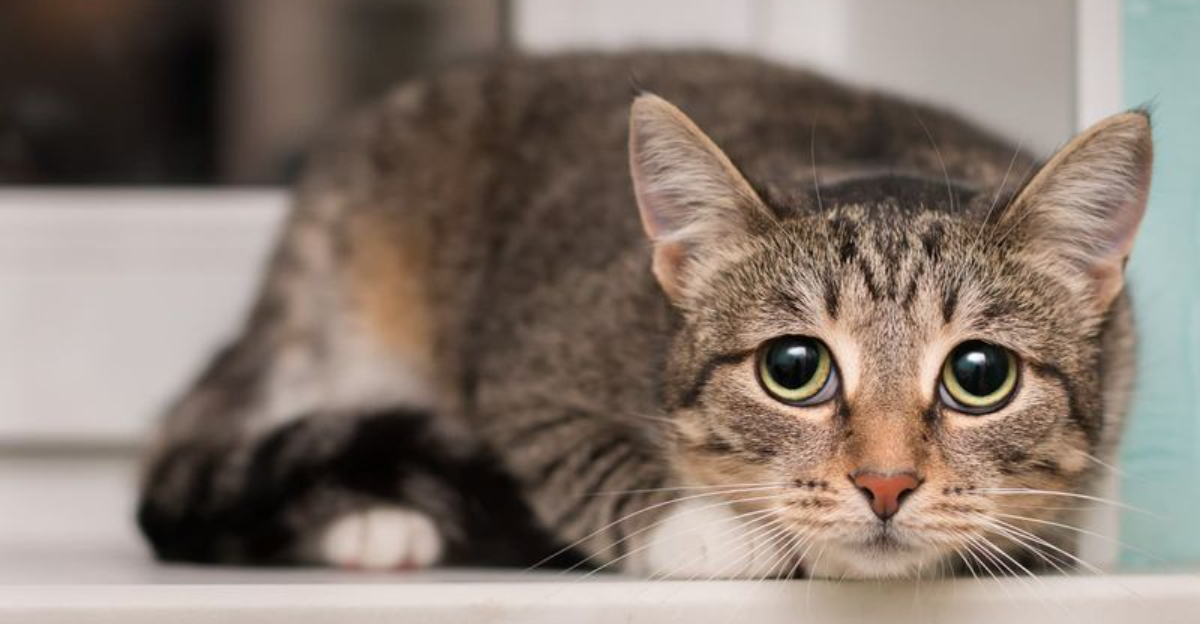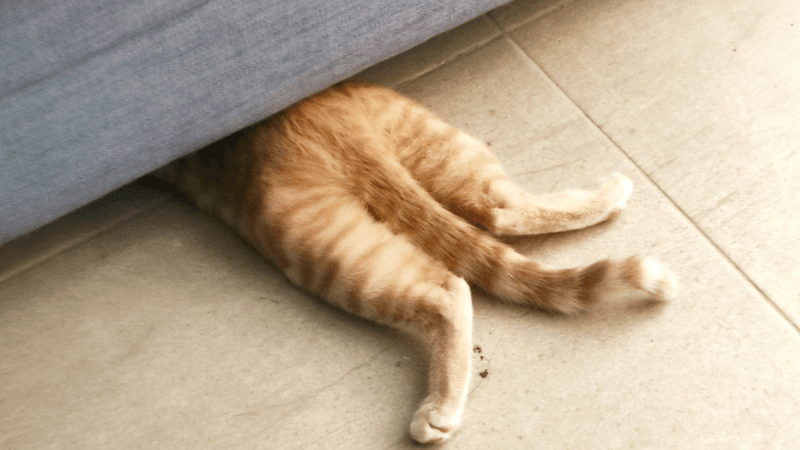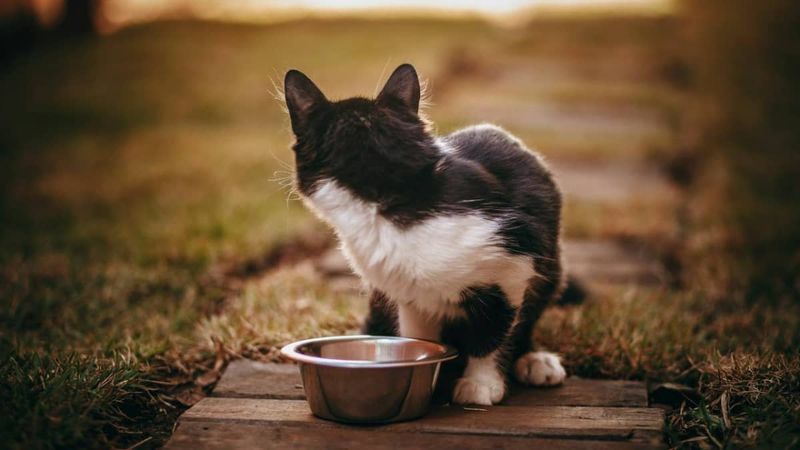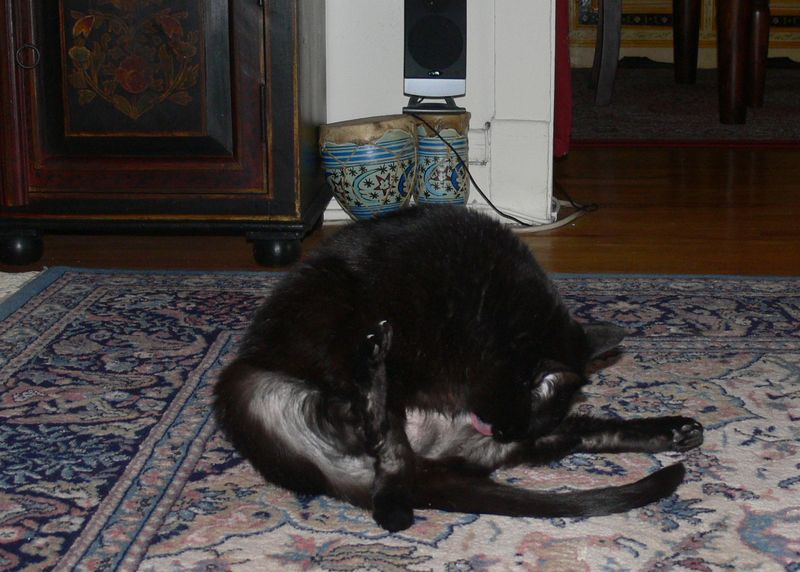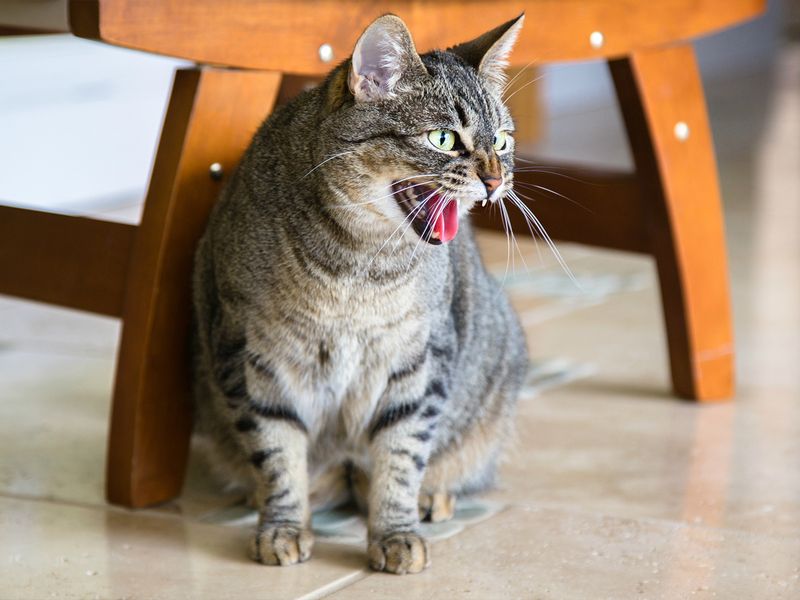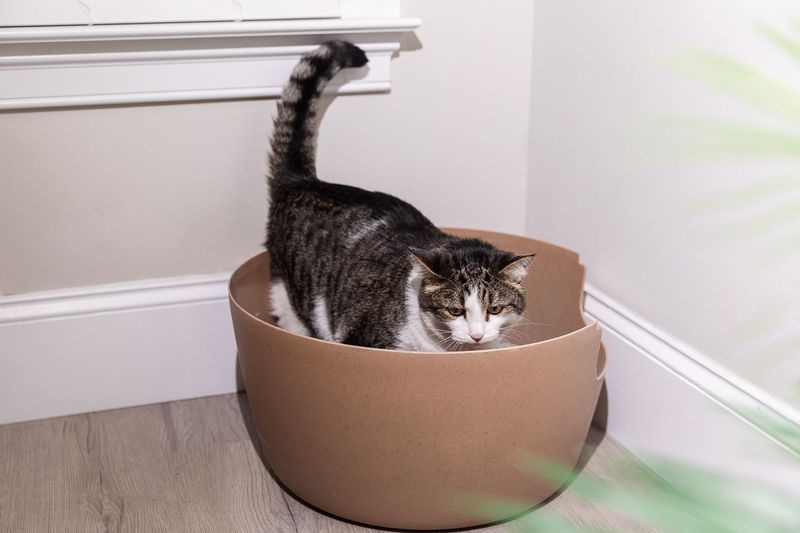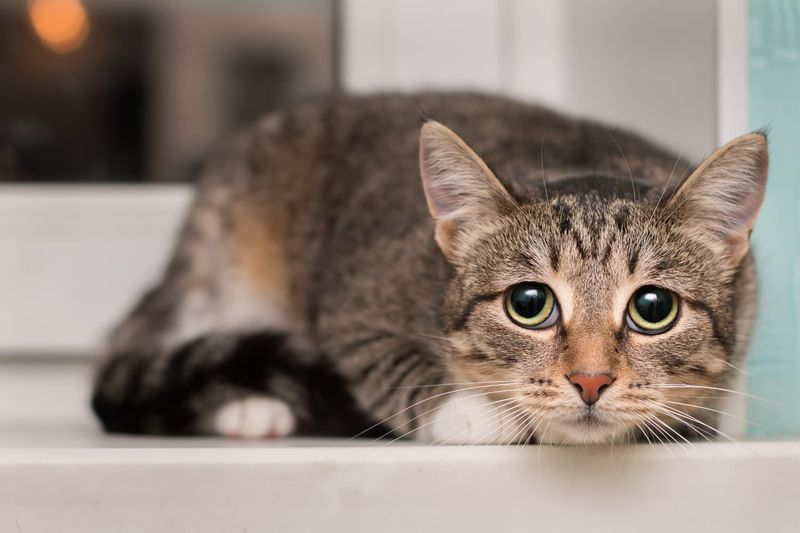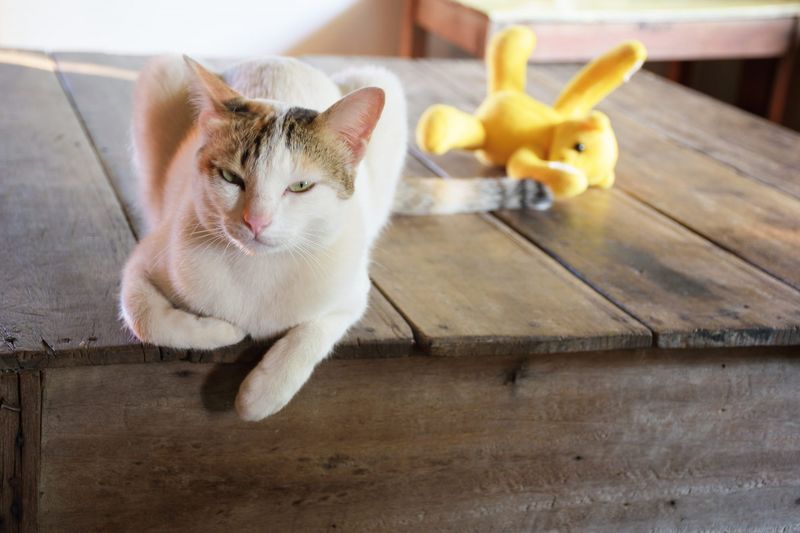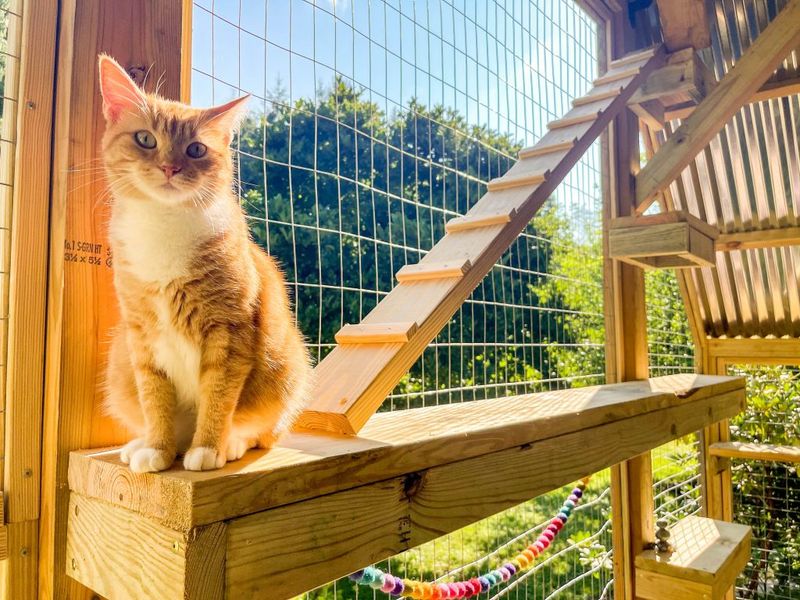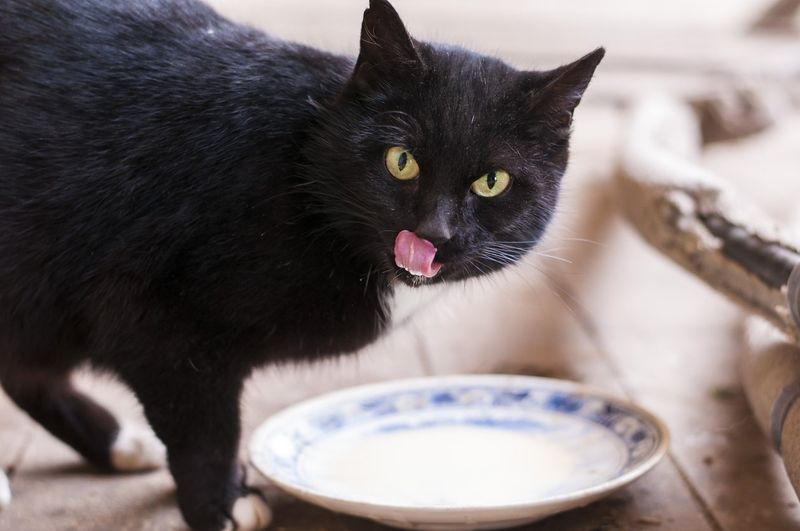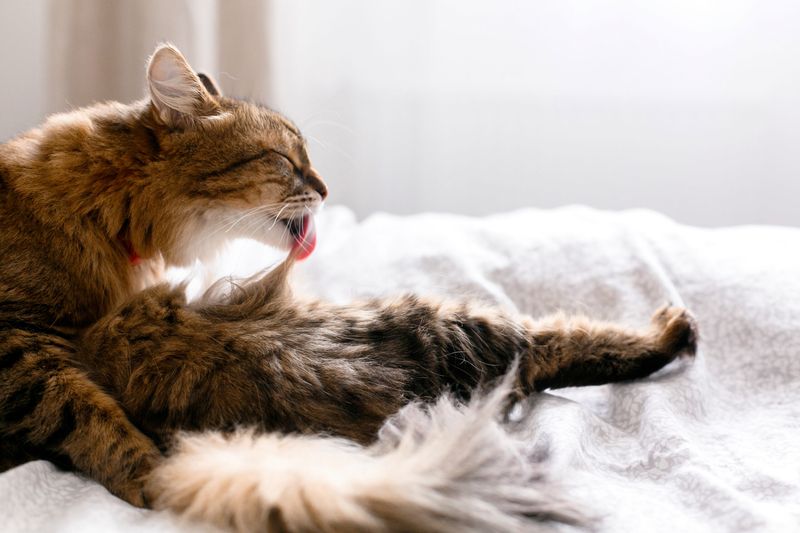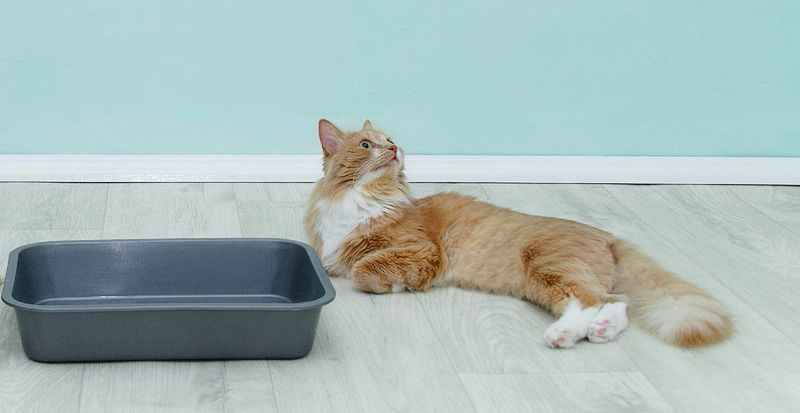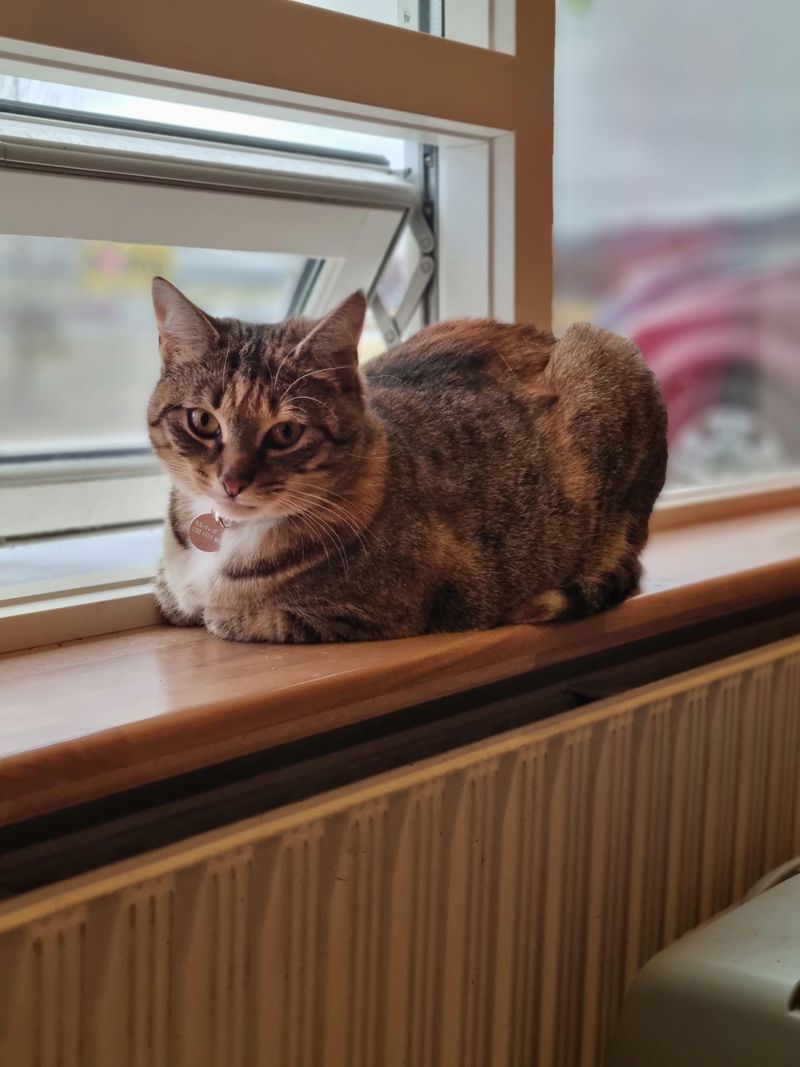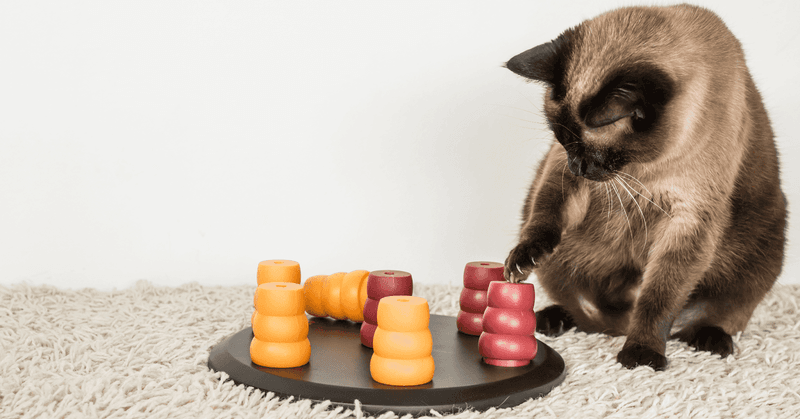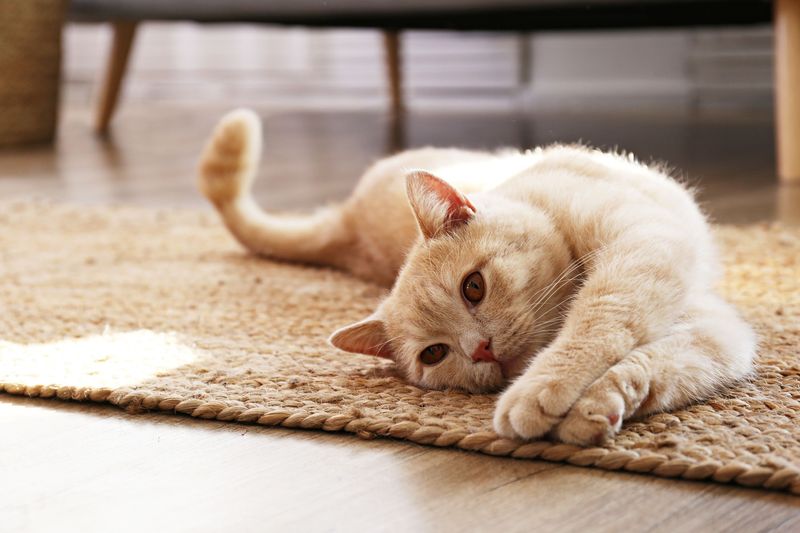📖 Table of Content:
- 1. Hiding Frequently
- 2. Lack of Appetite
- 3. Overgrooming or Not Grooming at All
- 4. Hissing, Growling, or Swatting
- 5. Using the Litter Box Inconsistently
- 6. Low or Tense Body Posture
- 7. Reluctance to Explore or Play
- 8. Exploring Freely
- 9. Eating and Drinking Regularly
- 10. Grooming Normally
- 11. Using the Litter Box Consistently
- 12. Resting in Open Areas
- 13. Engaging in Play
- 14. Approaching for Affection
Bringing home an adopted cat is a heartwarming experience, but it also comes with its own set of challenges. While some cats adjust quickly to their new surroundings, others may need more time, patience, and understanding. The transition from a shelter, foster home, or previous living situation into an unfamiliar space can be overwhelming, even when the environment is loving and safe.
Cats communicate a lot through subtle behaviors, and decoding those cues is key to supporting their emotional well-being. Stress doesn’t always look dramatic—often, it hides in small changes like a skipped meal, a tucked tail, or a quiet retreat under the bed. On the flip side, signs of comfort can be just as understated, like a gentle purr or a nap in the open, but they speak volumes about how secure a cat feels.
Understanding the difference between stress signals and comfort behaviors helps build a stronger bond and makes the adjustment period smoother for everyone involved. Recognizing these signs allows you to meet your cat’s needs with compassion and reassurance, making it easier for trust to grow naturally over time. Every small step toward relaxation is a sign that you’re on the right track.
1. Hiding Frequently
When a cat spends most of its time tucked away in hard-to-reach spots, it’s a strong indicator of lingering stress. At first, it may seem like simple shyness, but prolonged hiding usually means the cat feels unsafe. Behind furniture, under beds, or inside closets are common hiding places that offer perceived protection. Unlike playful hide-and-seek, this behavior is rooted in anxiety. You might notice the cat only emerges when the home is quiet or people are absent. Creating a calm, predictable environment can help reduce the need for retreat. Slowly introducing safe, cozy spots in open areas may encourage more confident behavior.
2. Lack of Appetite
Skipping meals is often one of the first physical signs a cat is emotionally overwhelmed. Even food they usually love may be ignored when stress takes over. A quiet food bowl can reflect loud inner tension. Appetite loss isn’t always due to illness—it can stem purely from fear or insecurity in a new space. It’s wise to monitor how much is being eaten and when. Offering familiar-smelling or high-reward treats can sometimes coax a nervous cat into nibbling. Consulting a vet is also a good idea if appetite loss persists more than a couple of days.
3. Overgrooming or Not Grooming at All
Some cats respond to stress by obsessively grooming one spot until bald patches form. Others might stop grooming altogether, leaving their fur greasy, matted, or unkempt. Unlike normal grooming routines, these changes are behavioral red flags. Constant licking is often a way to self-soothe during emotional distress. In contrast, not grooming may signal the cat feels too unsafe to focus on basic care. Providing safe zones and routine can gradually ease the urge to overgroom or neglect hygiene. Always rule out medical causes before assuming it’s stress-driven.
4. Hissing, Growling, or Swatting
Defensive behavior such as hissing or swatting doesn’t always mean aggression—it’s often fear in disguise. A stressed cat might react this way when feeling cornered or startled. The goal is usually to create distance, not to harm. Loud sounds, fast movements, or even unfamiliar smells can trigger this response. In new surroundings, the cat may lash out simply because it doesn’t yet know what’s safe. Patience and slow interactions can help rebuild a sense of security. Letting the cat set the pace is essential in these moments.
5. Using the Litter Box Inconsistently
Sudden litter box accidents can be a sign of emotional upheaval, not just a dirty box. A cat under stress might associate the box with danger or feel too unsafe to use it. Some may even mark territory as a way to feel more in control. While frustrating, this behavior is more about fear than defiance. Moving the litter box to a quieter area can sometimes help. Keep it clean and easily accessible to encourage routine use. If problems continue, a vet check is always recommended.
6. Low or Tense Body Posture
Crouched posture, flattened ears, and wide eyes are subtle yet powerful signs of unease. The cat may appear “frozen” in place or ready to dart away at any moment. Every muscle is often tight, signaling readiness to flee or defend. You may also notice a tail tightly tucked against the body. These cues often go unnoticed but say a lot about a cat’s emotional state. Speaking softly and moving slowly can help reduce these physical reactions. Trust builds slowly when fear runs deep.
7. Reluctance to Explore or Play
A stressed cat may show little to no interest in toys or new environments. What should be a curious wander turns into cautious avoidance. Play, for many cats, only happens when they feel secure. When anxiety is present, even the most tempting toy goes ignored. This lack of engagement is a clear indicator that the cat isn’t fully settled yet. Allowing quiet time and offering interactive play at the cat’s pace can help spark interest again. Building positive associations with surroundings takes time and patience.
8. Exploring Freely
When a cat begins to explore new spaces with ease, it’s a great sign of growing confidence. Walking into different rooms, jumping on furniture, or peeking into cabinets shows curiosity has taken over fear. The cat is no longer on edge and is beginning to claim the space as its own. Tail held high, ears forward, and a relaxed gait all support this shift. Every little adventure builds familiarity. It’s also an invitation to bond, as the cat may start checking out where you spend time. Letting this exploration happen naturally strengthens trust.
9. Eating and Drinking Regularly
Steady eating habits reflect a calm and content inner state. Mealtime becomes predictable and enjoyable rather than a source of anxiety. You’ll notice the cat approaching the bowl with confidence, not caution. It may even begin to “announce” feeding times with meows or pacing. Regular hydration is another great signal that stress is subsiding. Offering a routine feeding schedule can further reassure the cat. When appetite returns, it’s often a turning point in the adjustment process.
10. Grooming Normally
A well-groomed coat is more than just clean—it’s a sign of mental balance. Cats groom to soothe themselves and maintain comfort. When stress fades, grooming resumes in a steady and natural rhythm. Fur will look smooth, healthy, and cared for. Sometimes the cat may even groom in your presence, a gesture that suggests trust. This basic act speaks volumes about how safe the cat feels. Watching for a consistent grooming routine helps confirm emotional stability.
11. Using the Litter Box Consistently
Regular litter box use shows the cat is relaxed enough to maintain natural habits. Accidents typically stop once the environment feels predictable and safe. You’ll likely notice the cat using the box without hesitation or fear. A clean, quiet spot can reinforce this behavior. Confidence in this area means the cat no longer feels the need to mark territory or hide waste. Litter box consistency also reflects trust in the space provided. Keep the setup simple and calm to encourage continued success.
12. Resting in Open Areas
Cats that nap openly, rather than hiding, feel secure in their surroundings. A soft patch of sunlight or the middle of the bed becomes a favorite resting place. Sleeping with a belly exposed or fully stretched out signals deep relaxation. This level of vulnerability shows the cat doesn’t feel threatened. It may even choose to sleep near you, which indicates growing affection and trust. Comfort invites visibility—there’s no longer a need to disappear. These naps often come with slow blinks and peaceful purrs.
13. Engaging in Play
When a cat starts playing, it’s tapping into joy and curiosity. Bouncing after toys, pouncing on shadows, or chasing a string shows confidence. Play is also a bonding tool—it allows the cat to connect with people in a positive way. A stressed cat rarely plays, so this shift is meaningful. Even short bursts of activity can signal emotional progress. As comfort grows, playfulness becomes more frequent and spontaneous. Encourage this behavior gently to reinforce security.
14. Approaching for Affection
Choosing to seek out contact is a major sign of trust. A comfortable cat may rub against your leg, hop on the couch beside you, or gently nudge your hand. These gestures aren’t just physical—they’re emotional invitations. The cat now views you as part of a safe environment. Every purr, headbutt, or slow blink is part of the connection. These actions speak louder than any meow. Respecting boundaries while responding with kindness strengthens the bond even more.
